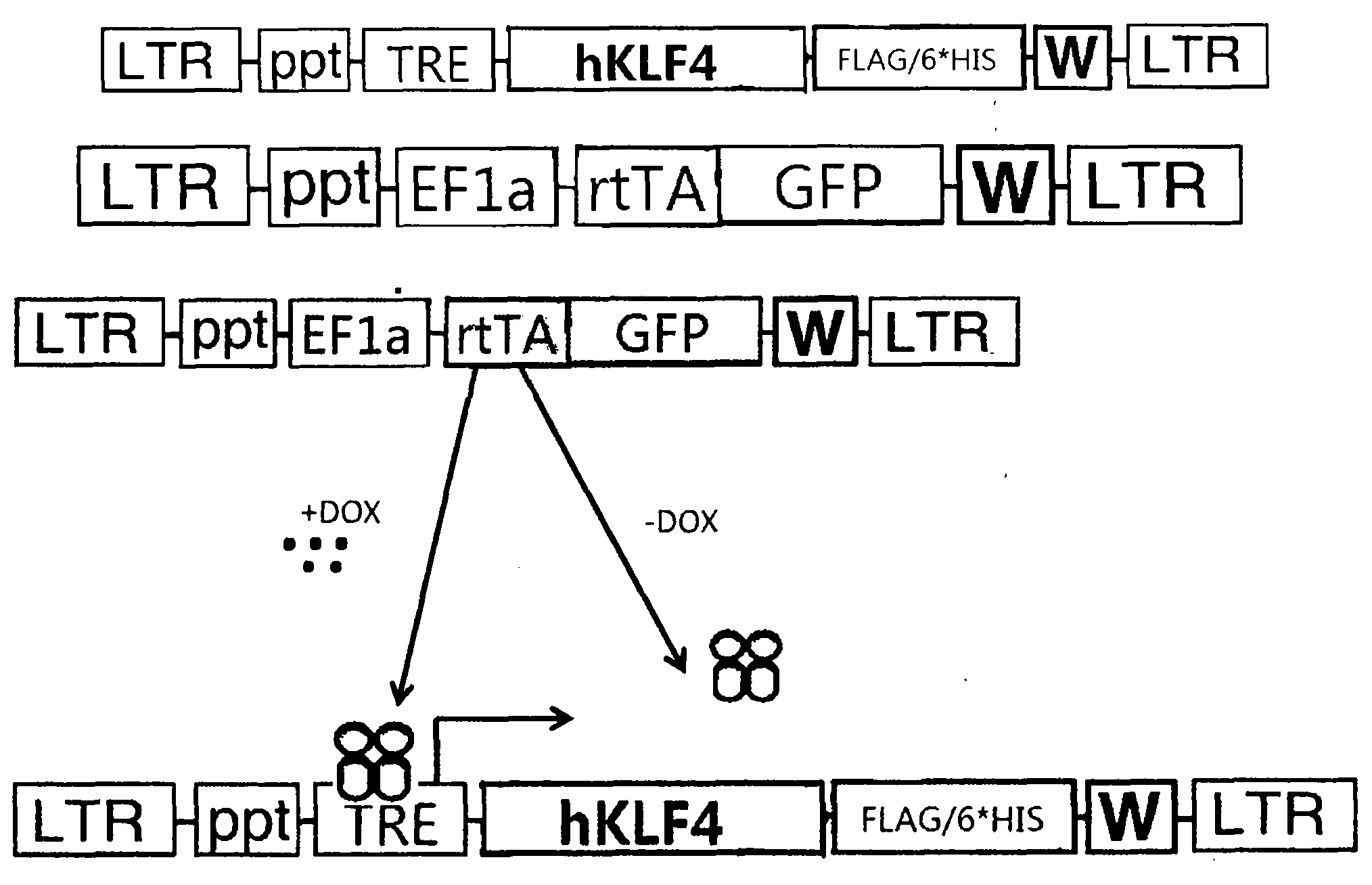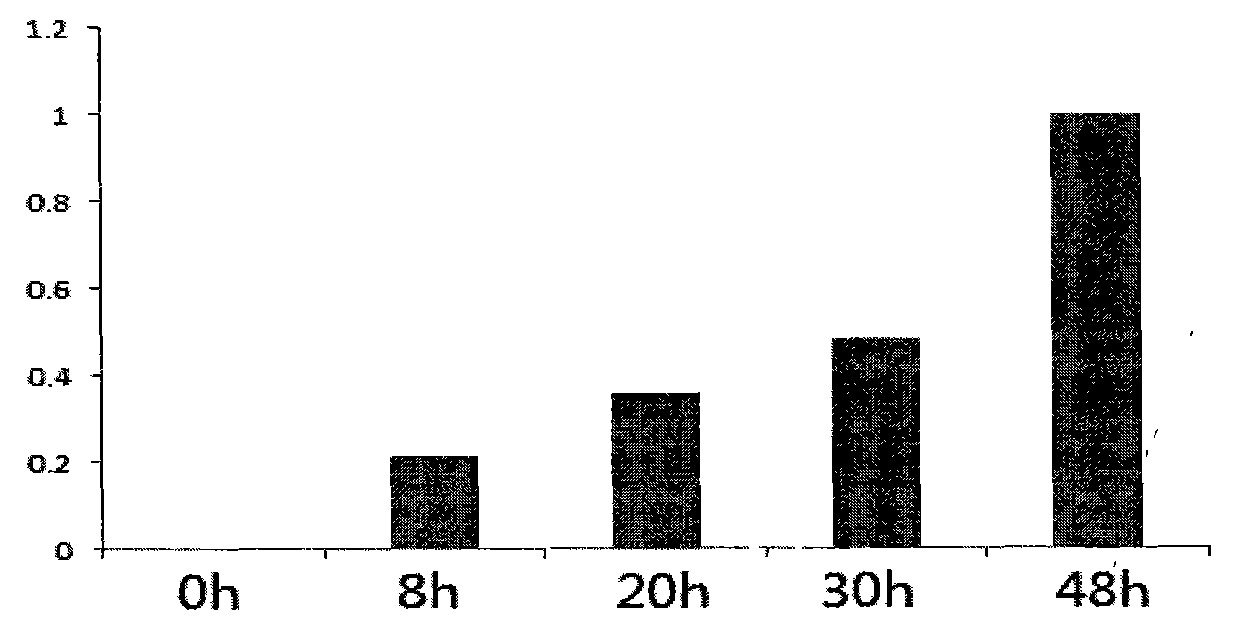Method for degrading BCL11B protein
A protein degradation and protein technology, which is applied in the fields of botany equipment and methods, biochemical equipment and methods, microbial measurement/inspection, etc. It can solve the problems of KLF4 downstream pathway and apoptosis mechanism that have not been elucidated in detail
- Summary
- Abstract
- Description
- Claims
- Application Information
AI Technical Summary
Problems solved by technology
Method used
Image
Examples
Embodiment Construction
[0084] The content of the present invention will be further described below in conjunction with specific embodiments.
[0085] The method for degrading the specific protein of BCL11B gene of the present invention, the first step of the method is to infect Jurkat cells with lentivirus to obtain the Jurkat cell group that can induce the expression of KLF4 gene. For the DNA sequence of the KLF4 gene, see the DNA Sequence Listing.
[0086] The Jurkat cells (uninfected) are from the American ATCC cell bank, and are a kind of acute T-cell leukemia cell line.
[0087] The lentivirus needs to be packaged before infection. The lentivirus used in the present invention includes rtTA lentivirus and KLF4 lentivirus, and the mass ratio of the two in the lentivirus is 1:1. The method used when packaging these two kinds of lentiviruses respectively is a well-known technology, and the specific methods are as follows: 1. Prepare a large number of lentiviral packaging helper plasmids (pSPAX2 an...
PUM
 Login to View More
Login to View More Abstract
Description
Claims
Application Information
 Login to View More
Login to View More - R&D
- Intellectual Property
- Life Sciences
- Materials
- Tech Scout
- Unparalleled Data Quality
- Higher Quality Content
- 60% Fewer Hallucinations
Browse by: Latest US Patents, China's latest patents, Technical Efficacy Thesaurus, Application Domain, Technology Topic, Popular Technical Reports.
© 2025 PatSnap. All rights reserved.Legal|Privacy policy|Modern Slavery Act Transparency Statement|Sitemap|About US| Contact US: help@patsnap.com



